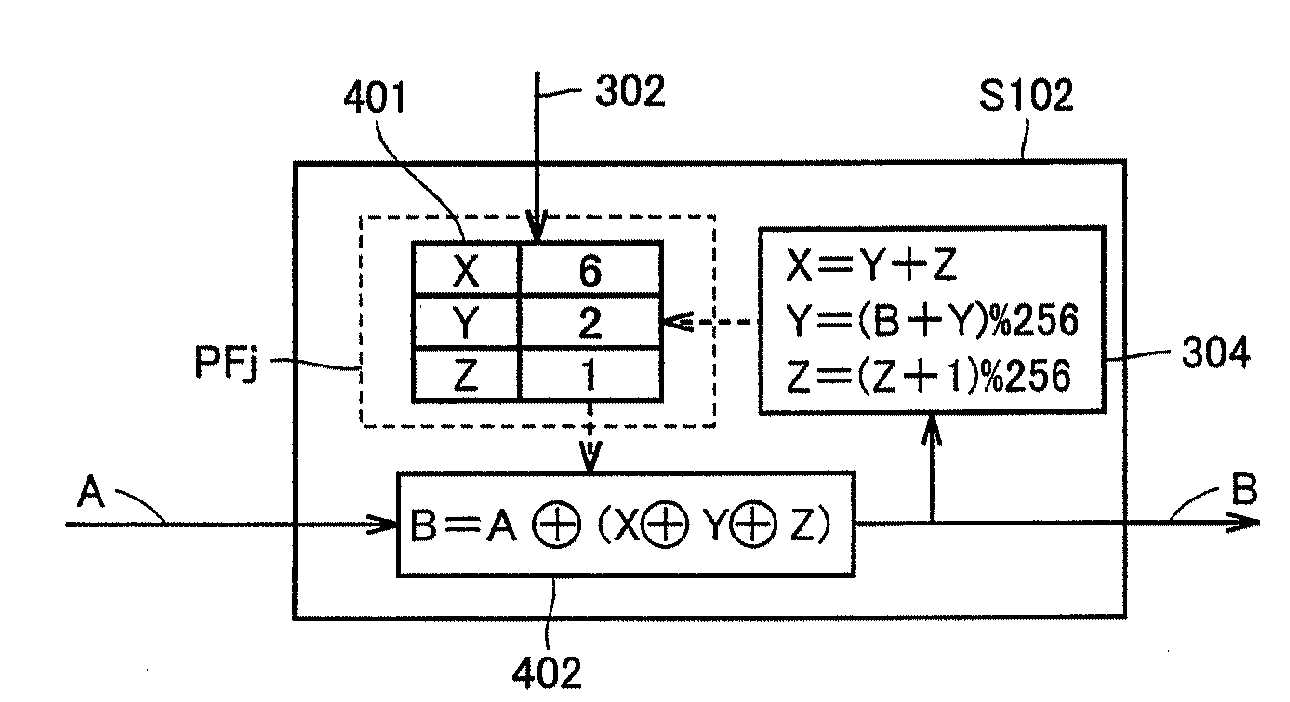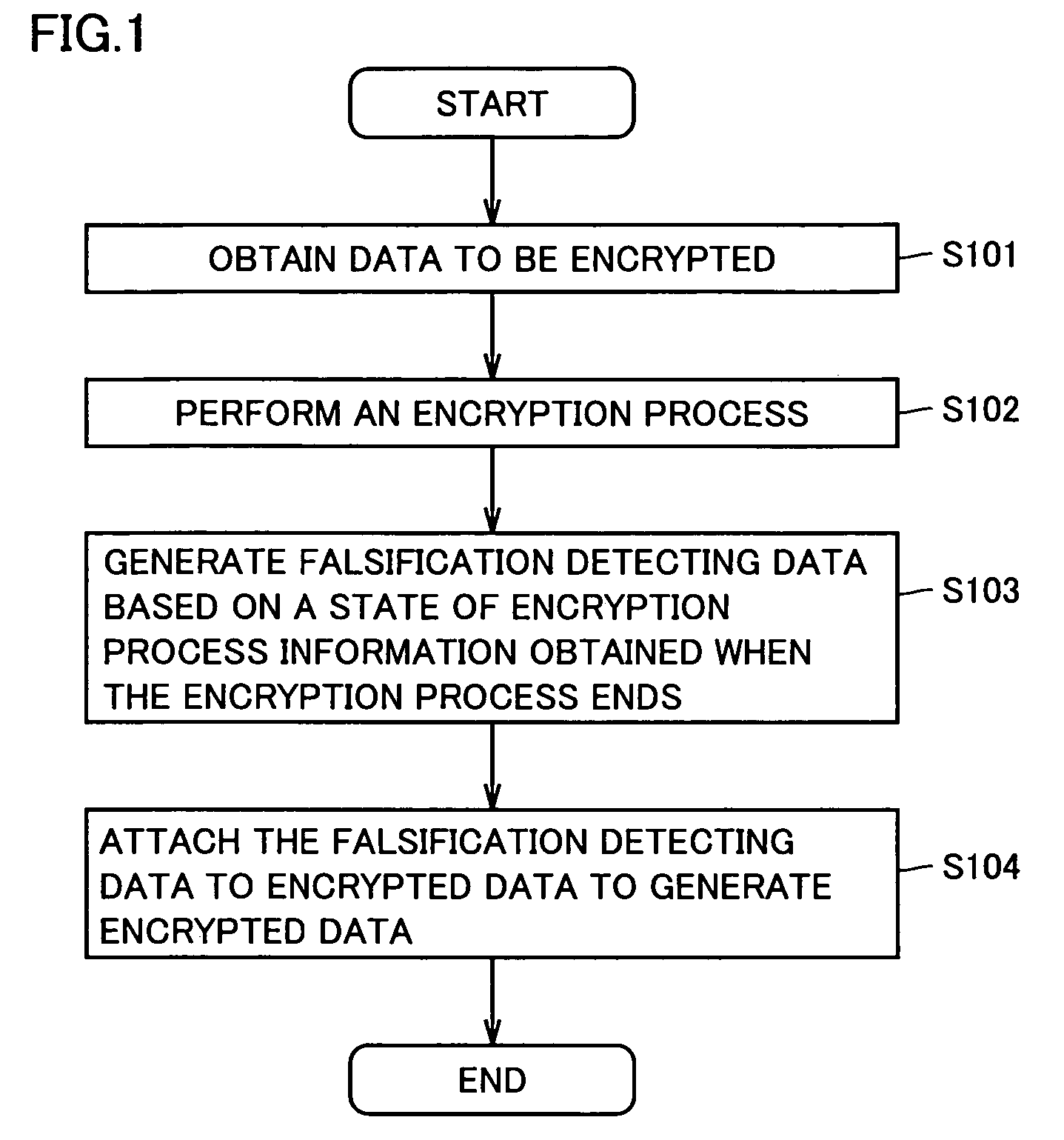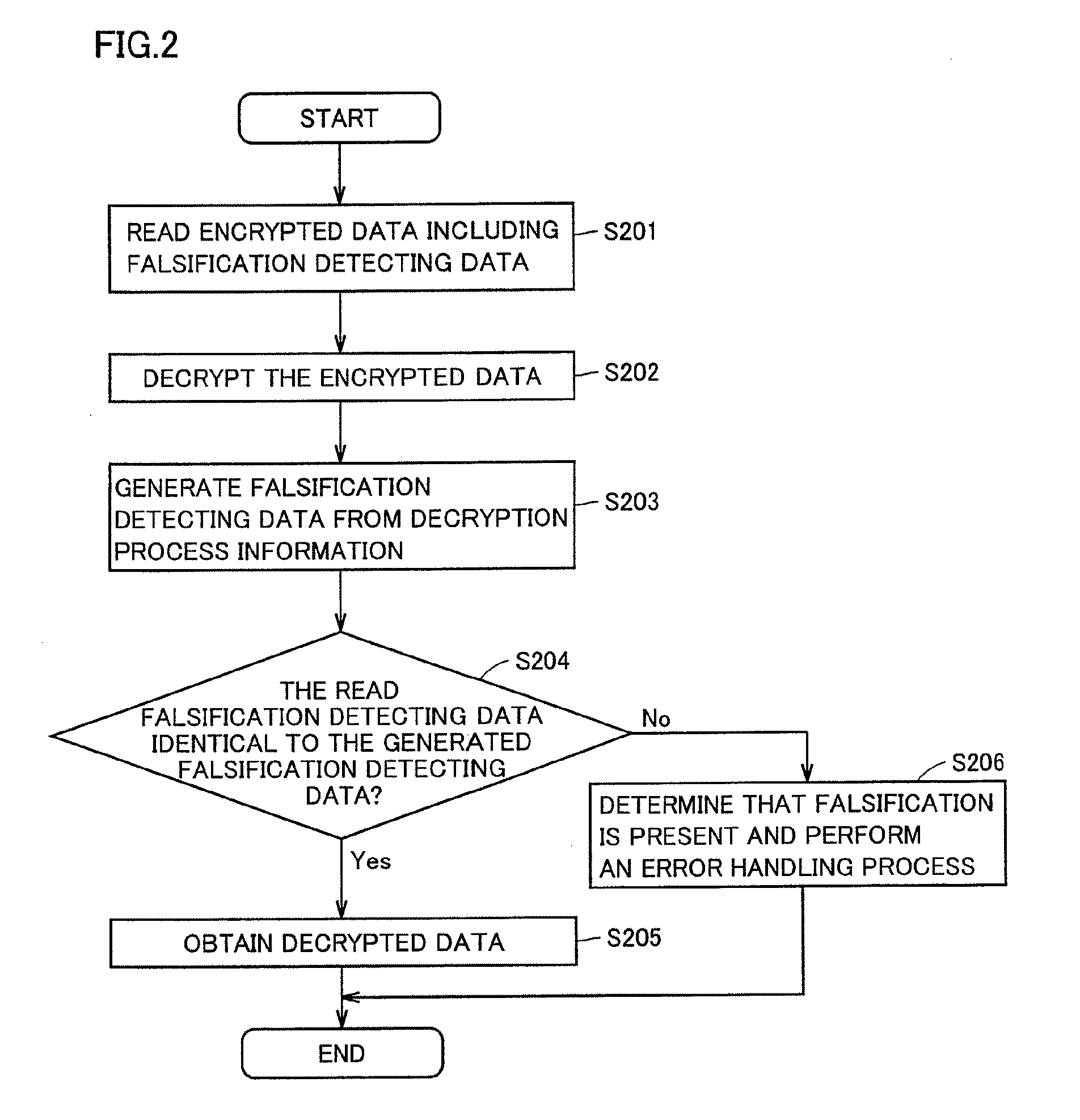Apparatus and method of generating falsification detecting data of encrypted data in the course of process
a technology of encrypted data and falsification detection, applied in the direction of digital transmission, unauthorized memory use protection, instruments, etc., can solve the problems of large amount of steps, data can be accessed and falsified, and require long periods of time, so as to reduce the amount of processing
- Summary
- Abstract
- Description
- Claims
- Application Information
AI Technical Summary
Benefits of technology
Problems solved by technology
Method used
Image
Examples
first embodiment
[0035]FIG. 1 shows a procedure of an encryption process in accordance with the present embodiment. This procedure employs an encryption algorithm that is applicable to any encryption systems in which a result of encryption and that of decryption are identical information and in encryption and decryption processes a previous operation's result is utilized to sequentially calculate the current operation's result. As such, a common-key encryption system or other similar, generally employed encryption systems can be used and for example it can be implemented by processing a well known data encryption standard (DES) in accordance with a procedure referred to as a cipher block chaining (CBC) mode. Note that the CBC mode is a method of encryption involving chaining and employs a previous encryption result to calculate the current encryption result successively.
[0036]With reference to FIG. 1, in the encryption process, data to be encrypted is initially obtained (S101). Although not shown, i...
second embodiment
[0065]In the first embodiment, encryption process information PF (z+1) and decryption process information DF (z+1) obtained when data to be encrypted 301 is completely encrypted (S102) and decrypted (S202) are used to generate falsification detecting data 308 and 309. In the present embodiment, the data to be encrypted 301 is divided into a plurality of blocks and encryption process information obtained when each block is completely encrypted and decryption process information obtained when each block is completely decrypted are used to generate falsification detecting data.
[0066]FIG. 6A shows the data to be encrypted 301 divided into n blocks Bk, wherein k=1, 2, 3, . . . , n. Block Bk may have data of a size determined by the memory capacities, processing capabilities and the like of the processing apparatuses sending and receiving the data to be encrypted 301, although desirably it is an integral multiple of the unit of the encryption process used. For example, DES allows encrypti...
third embodiment
[0072]As a specific application of each embodiment described above a third embodiment envisages a system distributing an electronic book's data (hereinafter referred to as “electronic book content”).
[0073]FIG. 9 shows an electronic book content distribution system. This system includes a content production device 801, a server device 802, a data display device 803, and a network 804 allowing devices 801 and 802 to communicate with each other and devices 802 and 803 to communicate with each other. Content production device 801 is configured of a general purpose personal computer to produce electronic book content. Content production device 801 includes a content input portion 805, a data encryption process portion effecting such an encryption process as has been described previously, and a transmission and reception portion 807. A content creator inputs electronic book content 800 via content input portion 805. The input electronic book content 800 is encrypted by encryption process ...
PUM
 Login to View More
Login to View More Abstract
Description
Claims
Application Information
 Login to View More
Login to View More - R&D
- Intellectual Property
- Life Sciences
- Materials
- Tech Scout
- Unparalleled Data Quality
- Higher Quality Content
- 60% Fewer Hallucinations
Browse by: Latest US Patents, China's latest patents, Technical Efficacy Thesaurus, Application Domain, Technology Topic, Popular Technical Reports.
© 2025 PatSnap. All rights reserved.Legal|Privacy policy|Modern Slavery Act Transparency Statement|Sitemap|About US| Contact US: help@patsnap.com



